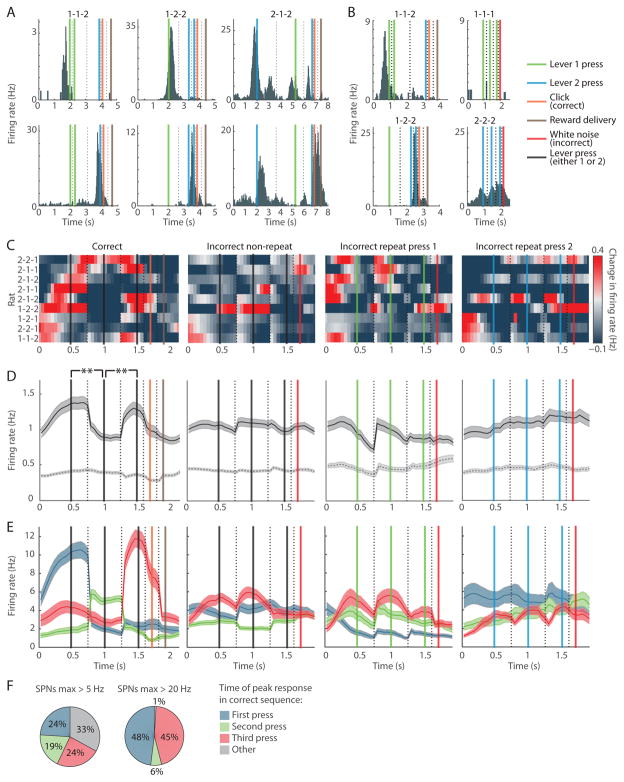Figure 3. Striatal SPN Population Spiking Is Concentrated around the Initiation and Termination of the Learned Lever-Press Sequence but Not during Incorrect Lever-Press Sequences, Regardless of the Lever-Press Sequence Learned.
(A) Activity of start (top) and end (bottom) SPNs in rats that learned 1-1-2 (left), 1-2-2 (middle) or 2-1-2 (right) lever-press sequences, plotted as in Figure 2A.
(B) Activity of start SPN (top) that spiked during the first lever 1 press in the correct sequence, but not during the middle lever 1 press (left). This SPN did not respond during incorrect trials with repetitive lever 1 pressing (right). Activity of end SPN (bottom) that fired during the last lever 2 press in the correct sequence but not during the middle lever 2 press during the correct sequence (left). This SPN responded weakly during repetitive lever 2 pressing (right).
(C) Mean peri-event SPN spiking during correct (first column), non-repeat incorrect (second column), lever 1 repeat (third column), and lever 2 repeat (fourth column) trials in 9 rats that learned different lever-press sequences indicated on the left.
(D) Mean peri-event activity for all SPNs for the same trial types as in C (solid, n = 2501, 2501, 1143 and 1338, respectively) and for SPNs that did not surpass 5-Hz firing rate during correct trials (dashed, n = 1857, 1857, 842 and 1002, respectively). Shading indicates SEM. **p < 0.01.
(E) Activity of sub-groups of SPNs responsive to first (blue), second (green) and third (red) lever press in the same trial types (n = 154, 125 and 157, respectively).
(F) Proportion of highly responsive SPNs that fired maximally in the 0.5-s window around the first (blue), second (green) or third (red) lever press, or at other times in the correct trial (gray).
See also Figures S1–3.

